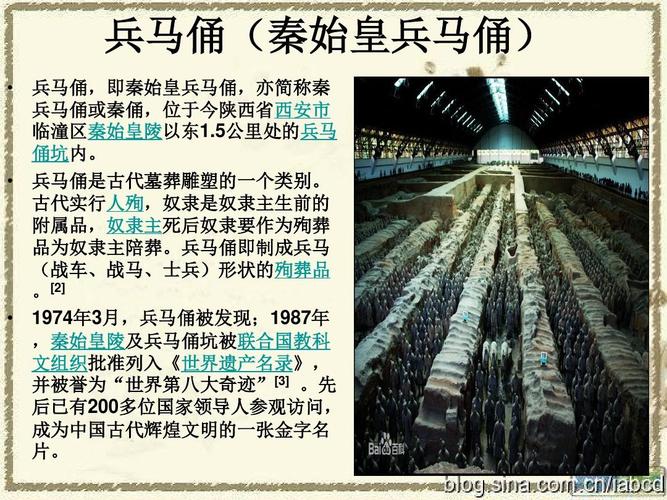
What Does the Terracotta Army Reveal?
The discovery of the Terracotta Army is important because of the information it gives historians about daily life in the Chinese Qin dynasty. The figures show armour and weapons, and the tomb contains many real artefacts such as chariots, weapons, pottery, and the human remains of workers who built it.
Military Organisation and Equipment
The Terracotta Army provides invaluable insights into the military organization and equipment of the Qin dynasty.
- Variety of Soldier Types: The army consists of different types of soldiers, each with distinct uniforms, hairstyles, and weaponry. There are archers, infantrymen, cavalrymen, and charioteers, showcasing the complex structure and specialization within the Qin army. For example, some figures are clearly depicted as foot soldiers, carrying swords or spears, while others are modeled as crossbowmen, kneeling with their weapons ready. This shows us that the Qin army, much like armies in later periods of history, contained a diverse range of soldiers, each trained for specific purposes.
- Advanced Weaponry: The weapons found alongside the terracotta warriors are remarkably well-preserved and demonstrate the advanced craftsmanship of the Qin period. Crossbows with bronze triggers, spears with cast-iron blades, and bronze swords with chrome plating demonstrate the technological prowess of the Qin military. The presence of such sophisticated weapons highlights the Qin's dedication to military strength and their ability to mass-produce effective weaponry.
- Military Strategy and Tactics: The arrangement of the soldiers and the different units within the army provide clues about Qin military strategy and tactics. The presence of chariots suggests a focus on speed and maneuverability, while the large numbers of crossbowmen point towards the importance of ranged warfare in the Qin army. We even have evidence of military ranks being displayed by the types of headdresses worn by the Terracotta Army, adding further weight to the idea of a complex and well-organised military force.
Art and Craftsmanship
The creation of the Terracotta Army was a monumental artistic and logistical undertaking, reflecting the high level of skill and craftsmanship of the Qin dynasty.
- Individualized Features: Each terracotta figure possesses unique facial features, hairstyles, and expressions, suggesting that individual artisans were tasked with creating lifelike representations of actual soldiers. This attention to detail highlights the artistic skill of the Qin craftspeople and their ability to create a vast army of unique individuals.
- Large-Scale Production: The sheer scale of the Terracotta Army, with thousands of life-sized figures, points towards a highly organized and efficient system of production. This indicates the existence of specialized labor, advanced kilning techniques, and the Qin government's ability to mobilize vast resources for ambitious projects.
- Artistic Styles and Techniques: The Terracotta Army showcases a blend of realism and artistic stylization. The figures are lifelike in their proportions and postures, yet their exaggerated features and expressive gestures reveal the artistic conventions of the period. The use of vibrant pigments and intricate details on the clothing and armor reflects the advanced artistic sensibilities of the Qin dynasty.
Qin Society and Culture
Beyond military insights, the Terracotta Army provides a glimpse into the broader social and cultural landscape of the Qin dynasty.
- Social Hierarchy: The different ranks and roles depicted within the Terracotta Army, from generals to foot soldiers, reflect the hierarchical structure of Qin society. The elaborate armor and chariots of the higher-ranking officers contrast sharply with the simpler attire of the infantrymen, highlighting the social stratification of the era.
- Labor and Governance: The construction of the Terracotta Army would have required the labor of thousands of workers over many years. This indicates a centralized government capable of organizing and managing large-scale projects and a society with a significant workforce. Additionally, the presence of supervisor's markings on some of the figures provides evidence of the hierarchical structure and oversight within the labor force.
- Beliefs and Practices: The construction of such an elaborate tomb and the inclusion of the Terracotta Army reflect the Qin dynasty's beliefs about the afterlife and the importance of honoring their ruler in death. The presence of miniature animals and everyday objects alongside the warriors suggests a belief in providing for the emperor's needs in the afterlife.
FAQs
Q: When was the Terracotta Army discovered?
A: The Terracotta Army was discovered in 1974 by farmers digging a well in Lintong District, Xi'an, Shaanxi province, China.
Q: How many terracotta figures are there in total?
A: It is estimated that there are over 8,000 terracotta soldiers, 130 chariots with 520 horses, and 150 cavalry horses buried within the three pits of the Terracotta Army complex.
Q: Why was the Terracotta Army built?
A: The Terracotta Army was built to accompany the first emperor of China, Qin Shi Huang, in his afterlife. It was believed that the figures would protect him and help him rule in the next world.